Holme Fen Spitfire dig: Suspected human bone found
- Published
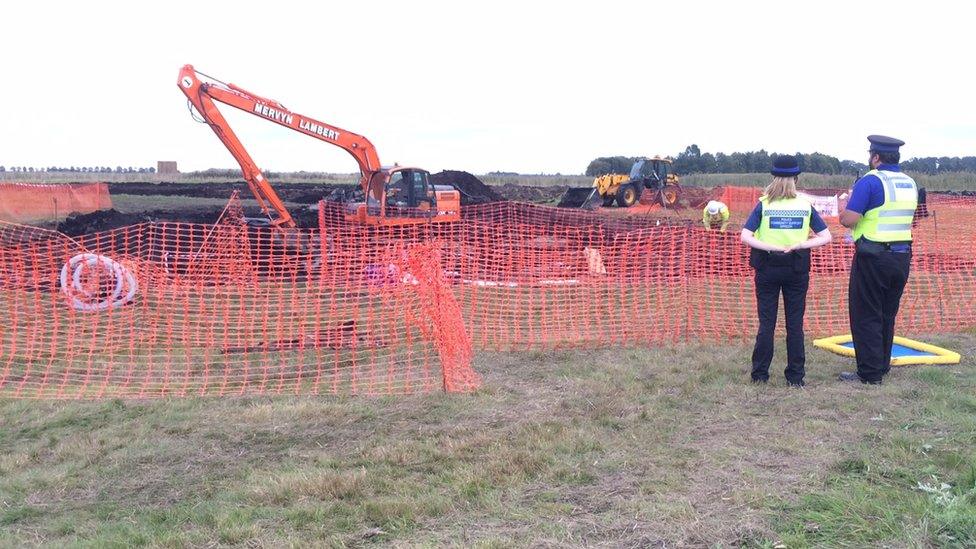
A dig to excavate a crashed Spitfire has been suspended because a bone thought to belong to the pilot has been discovered.
Archaeologists working at Holme Fen, Cambridgeshire, are hoping to unearth the fuselage of the plane, which crashed nose first at 300mph during a World War Two training mission in 1940.
But Oxford Archaeology East said the dig had stopped because "a fragment of human skeletal remains" was found.
The dig should continue on Friday.
Archaeologists working on the site have informed the coroner, who is said to be happy for the dig to carry on.
The cause of the crash of the Rhodesian Squadron Royal Air Force, external plane was never fully established, although an investigation concluded either Pilot Officer Harold Penketh's oxygen system failed or there was a physical failure of the plane.
The body of the pilot, Pilot Officer Harold Penketh, was recovered shortly after the wartime crash.
The "enormous crater" created by the Spitfire quickly filled with water as the water table in the area is high, eyewitness John Bliss, who was a child at the time, said.
So far archaeologists have dug two metres down and found the original excavation site for the recovery of the pilot's body by RAF Wittering, which took seven days at the time.
They have also recovered the starter motor, control panels from the cockpit, part of the oxygen system and the entire remains of one of the fuel tanks of the Mk 1A Spitfire X4583.
They also hope to recover the engine.
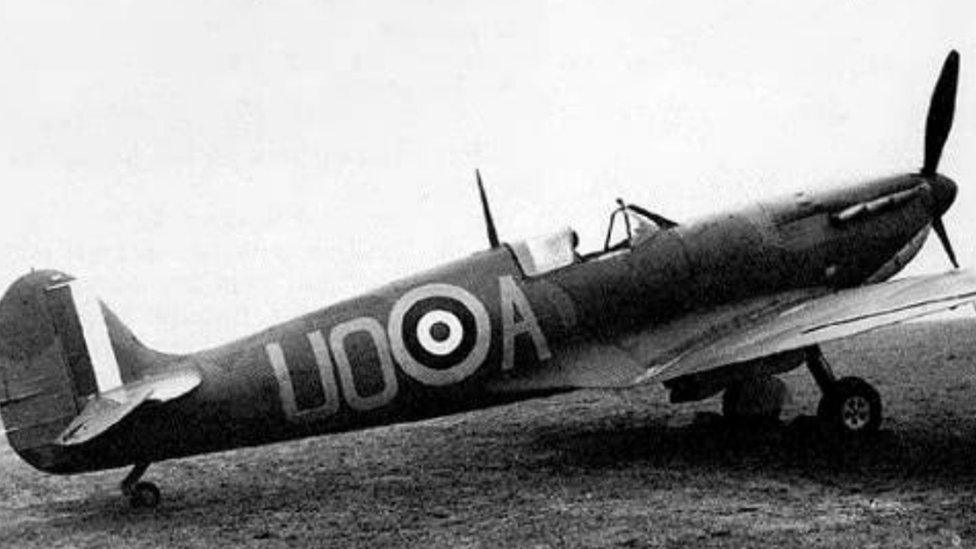
Pilot Officer Penketh's Mk 1A Spitfire crashed during a training mission in 1940
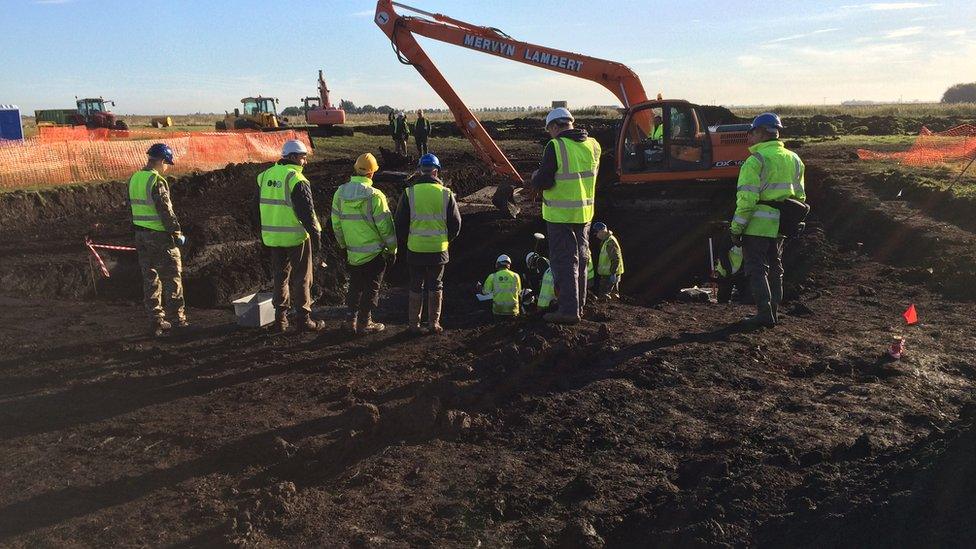
The dig started on Monday and saw several items recovered before the bones emerged
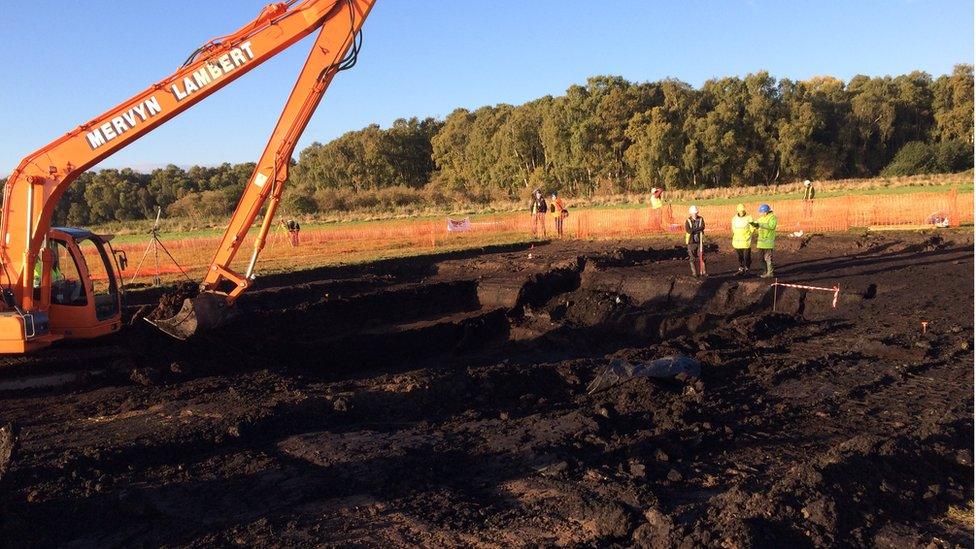
Archaeologist Stephen Macaulay said the dig had been a highlight of his 30-year career
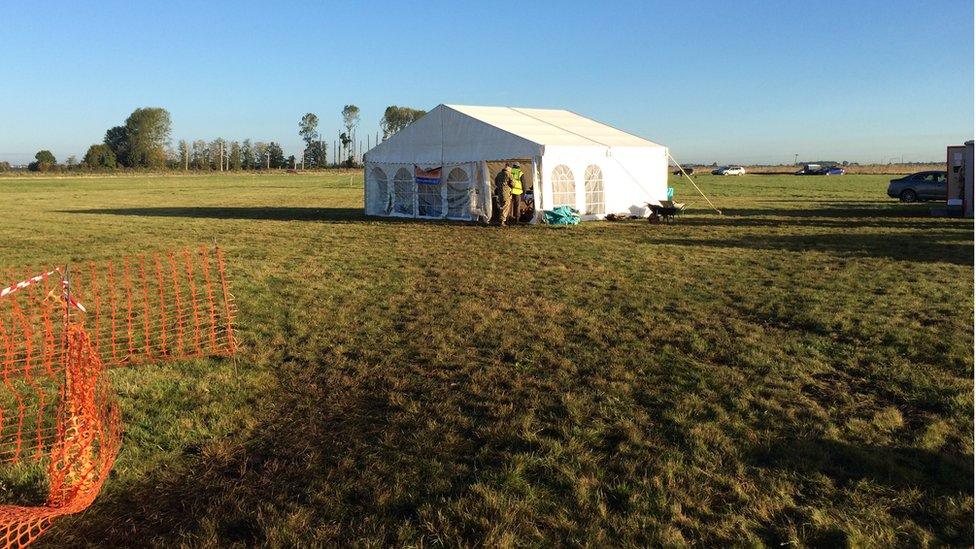
Artefacts are being collated, logged, photographed and cleaned nearby the site

Media have descended on the farmland site at the village of Holme, south of Peterborough
- Published7 October 2015

- Published5 October 2015
